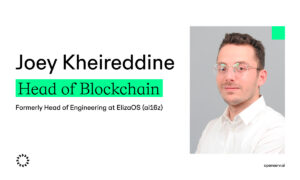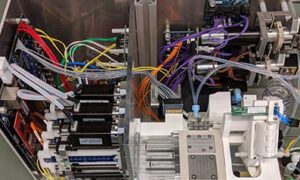Just as line limits eliminate bloat, building speed constraints drives architectural elegance. Research shows developers lose 23 minutes of focus after each interruption, and slow builds create hundreds of these micro-interruptions daily. This isn’t merely a productivity drain costing organisations $250 per developer per day—it fundamentally shapes code architecture. Teams with fast feedback loops write simpler, more maintainable code, whilst those suffering slow builds accumulate complexity. The 100 Lines Hackathon 2025 proves this principle: extreme constraints don’t compromise quality; they accelerate it. Tim Mukhin, a Microsoft DevEx specialist judging the hackathon, has spent 15 years demonstrating that removing development friction—particularly build time optimisation—doesn’t just save minutes. It transforms how developers think, design, and build software.
The hidden cost of slow builds compounds exponentially
When developers wait 60 seconds for a build, they don’t lose 60 seconds—they lose entire afternoons. Gloria Mark’s seminal research at UC Irvine found that after an interruption, developers require 23 minutes and 15 seconds to regain focus fully. During a two-minute build, developers open email, check Slack, or grab coffee. Each of these seemingly innocuous decisions fragments their cognitive state.
The mathematics are brutal. Martin Fowler’s research at ThoughtWorks demonstrates that a two-minute compile time, executed 100 times per day, compounds to over 100 minutes of lost productivity. But the real damage isn’t the waiting—it’s the context switching. Carnegie Mellon research shows developers juggling five projects spend only 20% of cognitive energy on actual work, with 80% lost to switching overhead.
Google’s 2023 study on build latency, published in IEEE Software, quantified what many suspected: there is no magic threshold at which developers suddenly become focused. Instead, every improvement in build latency helps developers stay on task. Reducing median build time by “just a few seconds” led to 5% increases in developer satisfaction, self-reported velocity, and productivity. The experiment group ran one additional build per week and submitted 24 more lines of code weekly—not because they worked harder, but because they maintained flow state.
| Metric | Impact | Source |
|---|---|---|
| Focus recovery after interruption | 23 min 15 sec | Gloria Mark, UC Irvine |
| Context switching cost per developer | $250/day | Industry research |
| Productivity in flow state | 3.4x baseline | Enterprise case study |
| Hot reload development time reduction | 70-80% | React case studies |
| Build time improvement productivity gain | 5% per reduction | Google, IEEE Software 2023 |
Flow-state research reveals why these numbers matter so dramatically. Developers experiencing flow demonstrate 3.4 times the productivity of the baseline. Flow requires uninterrupted blocks of deep work with clear goals and immediate feedback—precisely what slow builds destroy. When builds take 30+ seconds, developers shift tasks. When builds are complete in under 10 seconds, they stay immersed.
Fast feedback loops don’t just accelerate development—they improve architecture
The counterintuitive finding from decades of software engineering research: speed and quality aren’t trade-offs. Martin Fowler’s analysis demonstrates that teams prioritising “high internal quality” initially appear slower but overtake low-quality approaches within weeks. Clean code enables rapid changes; technical debt compounds into crushing slowdowns.
Fast feedback loops enforce architectural discipline through immediate consequences. When React Native’s Fast Refresh delivers changes in 1-2 seconds, developers experiment fearlessly. Shopify’s engineering team leveraged this for their Point of Sale app, combining React Native’s instant feedback with Kotlin Multiplatform for compute-intensive operations. They achieved 95% code sharing across platforms and reduced background sync from 30 seconds to 2-3 seconds—a 10-15x improvement that enabled the UX they envisioned.
The technical mechanism matters. Fast Refresh preserves component state during updates, eliminating the need to recreate the application context after each change manually. This isn’t merely convenient—it fundamentally alters how developers think. With instant feedback, they write smaller functions, test incrementally, and catch errors immediately. Slow builds encourage developers to batch changes, creating larger, riskier commits that introduce complexity.
Slack Engineering’s case study exemplifies this transformation. Facing 170-second production builds affecting 100+ daily deployments, they systematically optimised Webpack configuration. Through parallelisation, simplified minification, and strategic caching, they achieved 17-second builds—a 10x improvement. The real victory wasn’t speed alone; it was enabling developers to deploy confidently and frequently, reducing the fear-driven complexity that plagues slower systems.
Constraints force ruthless prioritisation and elegant simplicity
Richard Gabriel’s 1989 essay “Worse is Better” articulated a principle that hackathons prove repeatedly: simplicity in implementation beats perfection in design. Unix and C didn’t succeed by being complete—they succeeded by being simple enough to implement, portable enough to spread, and good enough to improve iteratively. Gabriel called them “viruses” that spread precisely because they weren’t burdened by comprehensive solutions.
The psychology is well-documented. A 2019 meta-analysis in the Journal of Management reviewing 145 empirical studies found that individuals, teams, and organisations all benefit from constraints—until they become excessive. Brent Rosso’s research on R&D teams demonstrated that constraints become creative fuel when teams develop “enabling dynamics”: seeing limitations as opportunities rather than obstacles.
The 100 Lines Hackathon 2025, organised by Hackathon Raptors, operationalises this principle. By limiting solutions to 100 lines, the competition eliminates architectural bloat before it starts. ApiCraft, one of the winners, demonstrates the power of this constraint. Built as a unified CLI tool replacing Postman, curl, and mock servers, creator Sanjay Sah explained: “That constraint forced me to focus only on features that matter most—and make them as compact and efficient as possible.”
Zero dependencies. Pure Node.js. HTTP testing, environment management, request history, mock servers, and code generation—all in 300 lines. This isn’t compromised functionality; it’s ruthlessly prioritised engineering. Every line justifies its existence. The result is more maintainable, more debuggable, and more valuable than an “unlimited” implementation would have produced.
Frederick Brooks, in his seminal 1986 essay “No Silver Bullet”, distinguished between essential and accidental complexity. Essential complexity lives in the problem domain itself—the business logic, user requirements, and conceptual structures we must build. Accidental complexity emerges from our tools and methods. Brooks argued that “the hard part of building software is specification, design, and testing of the conceptual construct, not the labour of representing it.”
His recommendation, drawn from personal experience: “Nothing in the past decade has so radically changed my own practice, or its effectiveness… I find that teams can grow much more complex entities in four months than they can build.” Incremental development with tight feedback loops enables organic evolution toward the right solution, whilst upfront comprehensive design accumulates accidental complexity.
DevEx engineering demonstrates constraint-driven optimisation at scale
Tim Mukhin, a Microsoft Software Engineer serving as a judge for the 100 Lines Hackathon, embodies the constraint philosophy through his Developer Experience work. His 15-year career centres on a single obsession: removing friction that prevents developers from focusing on what matters. At Microsoft’s Skype team, he systematically documented pain points—slow onboarding, fragmented tools, inefficient builds—then created scripts, improved environments, and wrote documentation to eliminate them.
Mukhin champions “bottom-up DevEx”, where improvements emerge from developers identifying constraints and building solutions organically. This mirrors the hackathon’s philosophy: constraints don’t hinder quality when developers embrace them creatively. His approach recognises what research confirms—the ACM Queue DevEx framework identifies three critical dimensions affecting productivity: feedback loops, cognitive load, and flow state. Fast builds optimise all three simultaneously.
The broader DevEx movement demonstrates constraint thinking at enterprise scale. eBay’s Velocity Initiative focused on feedback loops and cognitive load, achieving 2x release frequency and 6x reduction in deployment lead times. These improvements didn’t emerge from adding complexity—they resulted from eliminating accidental complexity that slow processes had accumulated.
Industry benchmarks reveal the transformation fast builds enable:
| Build Context | Incremental Target | Clean Build | Impact |
|---|---|---|---|
| Mobile (React Native) | 1-2 seconds | 30s-3 minutes | Fast Refresh enables flow |
| Web (Webpack optimised) | <5 seconds | 30s-5 minutes | Sub-second feedback loops |
| Android (optimised) | 10-15 seconds | 2-3 minutes | Maintains developer focus |
| iOS (medium project) | 3-10 seconds | 2-5 minutes | Enables rapid iteration |
McKinsey’s 2020 study found that companies with superior developer environments achieved revenue growth 4-5x that of competitors. This isn’t correlation—it’s causation. Fast builds enable frequent deployment, which enables rapid learning, which allows better product decisions, which drives revenue.
The competitive advantage of constraint-embracing organisations
The Hackathon Raptors community, bringing together engineers from Google, Microsoft, Amazon, Meta, NVIDIA, and Tesla, organised eight successful hackathons in 2024 with over 1,600 participants. Their philosophy combines “strict scientific methods” with “software that matters”—top quality delivered under significant constraints. The 100 Lines Hackathon extends this thinking: if you can build something valuable in 100 lines, you’ve eliminated every superfluous element.
DORA metrics research demonstrates that high-performing teams don’t trade speed for quality—they achieve both simultaneously. These teams deploy multiple times per day with 0-15% failure rates and recovery times of less than 1 hour. They accomplish this through architectural decisions that fast feedback loops enforce: modular design, comprehensive automated testing, feature flags, and robust observability.
The architectural feedback loop creates either virtuous or vicious cycles. Modular architecture enables fast local builds, which builds confidence to refactor, which produces cleaner modules, which accelerates builds further. Conversely, monolithic architecture leads to slow compilation, which instils fear of change, which accumulates cruft, which slows builds even more. The constraint of fast builds forces the virtuous cycle.
Test-Driven Development exemplifies constraint-driven architecture. The requirement that code must be testable forces loose coupling, dependency injection, interface-based design, and small, focused functions. Research shows TDD teams produce code with 40-60% better modularity metrics and 50-90% fewer defects. The constraint of writing tests first doesn’t slow development—it prevents the architectural mistakes that would slow everything later.
Constraints as a competitive strategy, not a limitation
The evidence converges: appropriate constraints accelerate quality rather than compromise it. Time limits force prioritisation of essential features. Line limits eliminate unnecessary complexity. Fast build requirements enforce modular architecture. These aren’t arbitrary restrictions—they’re focusing mechanisms that prevent the accumulation of accidental complexity.
The 100 Lines Hackathon and Tim Mukhin’s DevEx work represent the same principle at different scales. Both recognise that developers drowning in possibilities produce worse software than developers operating within well-designed constraints. The hackathon proves that 100 lines can deliver remarkable functionality when every line matters. DevEx optimisation proves that fast builds transform not just productivity but architectural thinking itself.
When Slack reduced builds from 170 to 17 seconds, when Shopify reduced sync from 30 to 2-3 seconds, when React Native reduced reload from 30 to 1-2 seconds, they didn’t merely save time. They created environments where developers could think differently—experiment fearlessly, refactor confidently, and build systems that remained elegant under pressure.
Frederick Brooks concluded his research journey by advocating for “growing” software incrementally rather than “building” it comprehensively. The metaphor matters: gardens grow through continuous tending within natural constraints, producing organic beauty. Buildings are constructed through upfront planning, producing rigid structures that resist change. The organisations embracing constraint-driven development—fast builds, line limits, rapid feedback—are growing gardens. Those still treating software as construction projects are accumulating technical debt in rigid structures that collapse under their own complexity.
The paradox resolves: speed doesn’t compromise quality when it’s achieved through constraint-driven simplicity rather than corner-cutting complexity. Line limits force better code. Fast builds force better architecture. Tight feedback loops force better decisions. These constraints don’t hinder excellence—they make it inevitable.



































